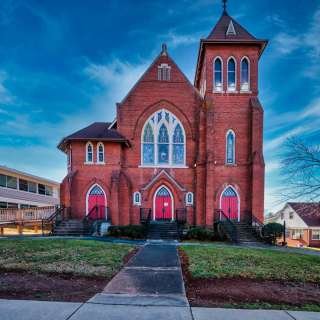A Past of Faith: Three Historic Churches from Black Mountain to Asheville
Becca Boynton | April 18, 2024
Asheville, Swannanoa and Black Mountain all boast a rich tapestry of history and culture. Historic churches are timeless landmarks amidst the scenic Western North Carolina (N.C.) mountains. From quaint chapels to grand cathedrals, each contains a story of faith and community.
Here are just a few sacred sites that help define this corner of Western N.C.'s spiritual landscape, where history whispers through stained-glass windows and echoes within ancient walls.
While N.C. can be viewed as a melting pot of cultures and religions, much like America, today I am focusing on specifically Christian churches. However, they are not the only representation of faith in Western N.C.
Black Mountain Presbyterian Church
Black Mountain did not have a Christian church until 1908 when thirteen Presbyterian families joined together to form the first church in their town.
The families worshiped at Piney Grove until 1910, when a plot of land was purchased in Montreat for a flat rate of $200.
Although the church was small, containing only an area of congregation, C.C. Dougherty and W.C. Greene built an educational wing by 1919.
By the 1980s, the church had seen a complete remission. In 1984, the Church demolished the original building, which was now more than a mere white building on the strip of the road.
Before the demolition, the Church had transformed into a significant meeting point for the community of Black Mountain. However, this demolition expanded the church into a larger building and area.
Now, the Church sits upon the entrance of Black Mountain from Swannanoa.
Saint Matthias Church of Asheville
The oldest congregation of black Episcopals in Western North Carolina, St. Matthias, was founded in 1865 as a mission of the Trinity Chapel.
Originally known as Freedmen’s Church, the small brick building was a place of worship and a school for children and adults.
As the congregation grew, a new building was required. In 1865, James Vester Miller, a formerly enslaved member of the church, supervised the rebuilding the church into the structure we know today.
Honing a gothic aesthetic, the structure has become a staple in Asheville's history. In 1979, it was officially placed on the National Register of Historic Places.
First Congregational United Church of Christ of Asheville
Easter Sunday 1918, a quaint group of Northern Congregationalists moved into their new church's first official building on Merrimon Avenue.
As an outspoken and accepting congregation, the members found it difficult to establish roots until 2005, when the church found its forever building, where it is today.
The original members founded Asheville's First Congregational Church with the hopes of building a loving community without fear of judgment from not only God but also fellow believers.
As the sun sets over the rocky landscape of Western North Carolina, the historic churches stand as enduring symbols of community. Whether nestled in the rolling hills or perched atop rugged mountains, these churches continue to inspire reverence and awe, serving as spiritual sanctuaries and architectural treasures for generations.





